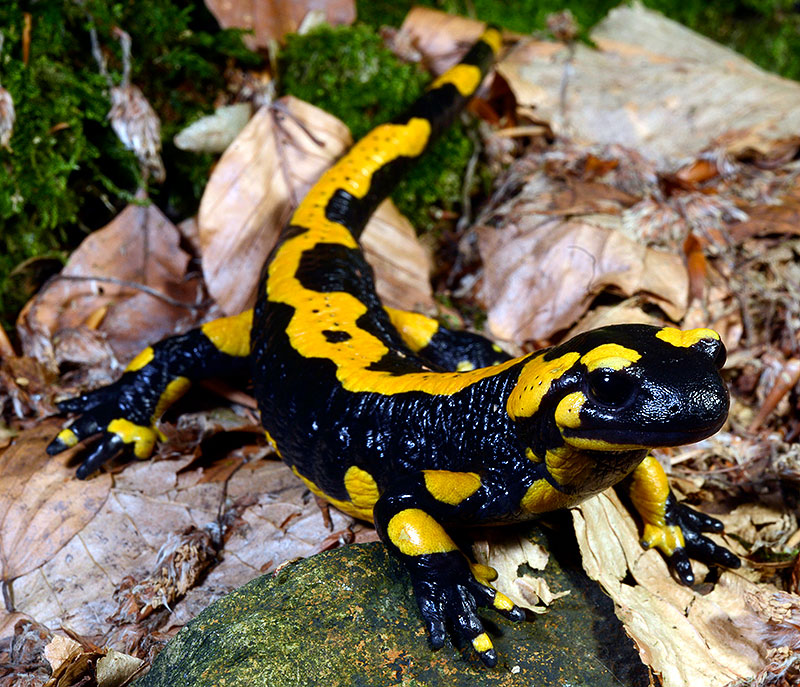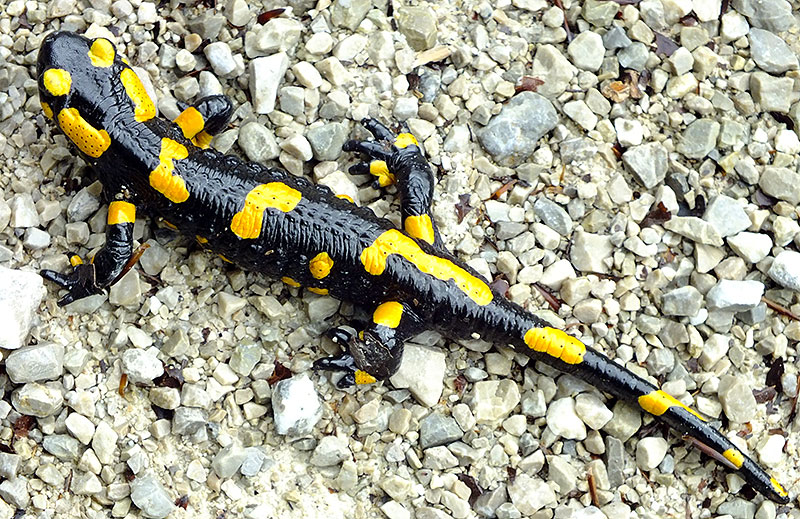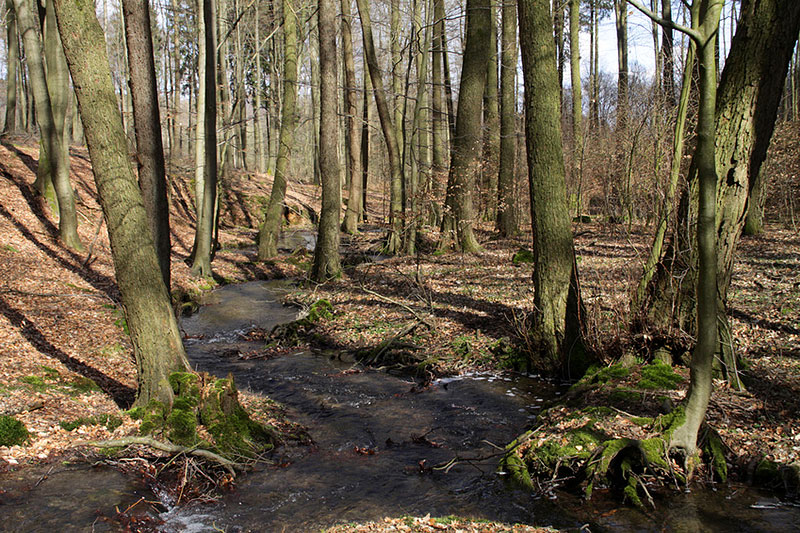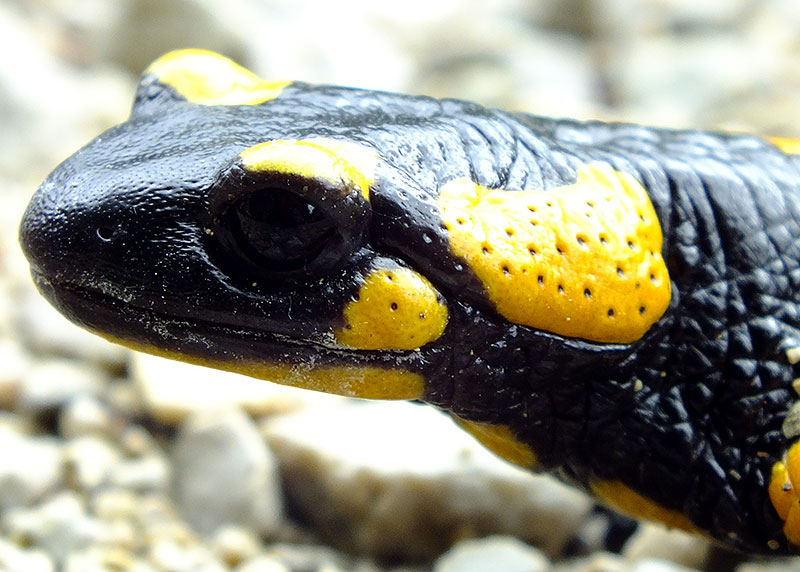The fire salamander (Salamandra salamandra) is a typical European amphibian species. It is found from the Iberian Peninsula over to central Europe and on to Asia Minor; its range is conspicuously similar to that of the European beech in central Europe.
In Germany the main point of distribution of the fire salamander is in the lower mountain ranges rich in deciduous forests. It is absent in the north German lowlands and the river Elbe serves as the eastern border of its range. A gap in the distribution between the Danube and the Isar - the so called Allgäu gap - reflects the different post-glacial repopulation paths.
The yellow-black coloration is typical. In central Europe two subspecies encounter one another and can only be told apart by their differing yellow spots. They hybridize in a wide overlapping zone that extends from northern Hesse, through northern Bavaria and all the way till Saxony.
A loyal companion of the beech
In comparison with other native amphibian species, the fire salamander is the one bound the most on the forest (primarily beech and mixed beech forests). As a result, it displays a wide regional distribution.
In addition to its summer habitat in humid and cool deciduous forests the fire salamander also needs small streams, headwaters of forest brooks and springs in which to live. It is of great importance that there are ample hiding places for the larvae between tree roots, rocks and streamside vegetation in these bodies of water. The adult animals need hiding spots in the forest which can be in rotten tree stumps, between tree roots, in the dens of small mammals, in cracks of walls and rock faces and under dead wood. In such places, the fire salamander can find cooler temperatures and higher humidity during the day.
Mating and reproduction
Fire salamanders mate in the summer. The male attempts to crawl under the female. Then he hugs the female with his fore legs and rubs her underside and chin with head and tail movements. If the lady is brought into the mood then the male will release a sperm packet (spermatophore) which the female can insert into its cloaca. Finally, the eggs will be fertilized in the body of the female.
Usually in March of the following year the female will look for clear water in forest brooks. It is here the female will distribute over the course of many nights between ten and seventy larvae. Between June and September, just after metamorphosis, the young salamanders are approximately five centimeters long and journey to the land.
The fire salamander mates, contrary to our newts, not in standing water, but rather primarily in flowing waters. It especially needs fish free headwaters so its larvae can develop. The larvae don't seem to be influenced by acidity as compared to our native amphibian species. On the other hand, the loss of embayment's and potholes in stream beds of headwaters, which protect against currents, are extremely detrimental. Additionally unfavorable are the competition of released fish (e.g. brook and brown trout), water pollution, damming of streams for fish production of even the conversion of deciduous forests in the headwaters into pure conifer stands.
Activity and sustenance
Fire salamanders are usually active in the time from March till October/November, but primarily during spawning and reproduction time in spring. In the fall the animals look for protected shelters for overwintering in the soil, burrows or tunnels in which they will hibernate.
The amphibian is nocturnal and is only seen during the day during high humidity or temperatures between 8 and 12 °C, usually after thunderstorms. The fire salamander prefers spiders, beetles, caterpillars, earthworms and slugs for its nourishment.
Toxicity of the fire salamander
The fire salamander can exude a strong poison on its skin from large glands on its ears and back which can kill potential predators. It consists of centrally acting cramp causing substances. Another important purpose of the salamander poison is the effectively protect itself from skin infections, for example from fungus or bacteria.
Endangerment from the salamander fungus
In 2013 a chytrid fungus (Batrachochytrium salamandrivorans) was discovered that infests living fire salamanders and eats away small holes in its skin. In the Netherlands, the infestation with the fungus caused a population collapse in the field up to 97 percent since 2010. In laboratory tests this fungus killed nearly all salamander and newt species which occur in Europe. On the other hand, the fungus does not pose a danger to frogs.
Protective measures in the forest
In order to protect the fire salamander in the long term the tightly knit habitat complex of near to nature broadleaved and mixed forests as well as structure rich streams and stream watersheds has to be preserved and promoted.




